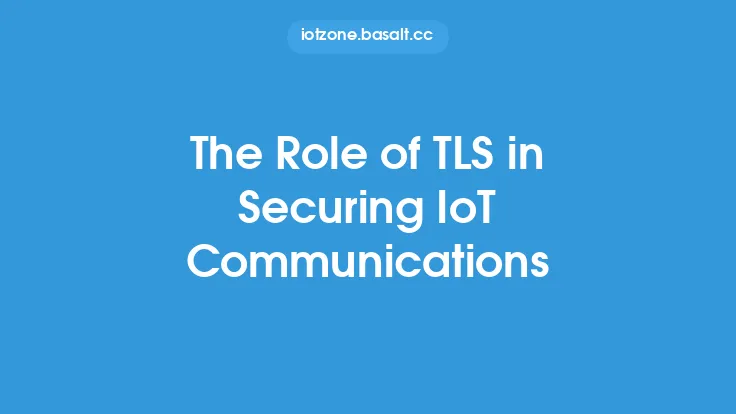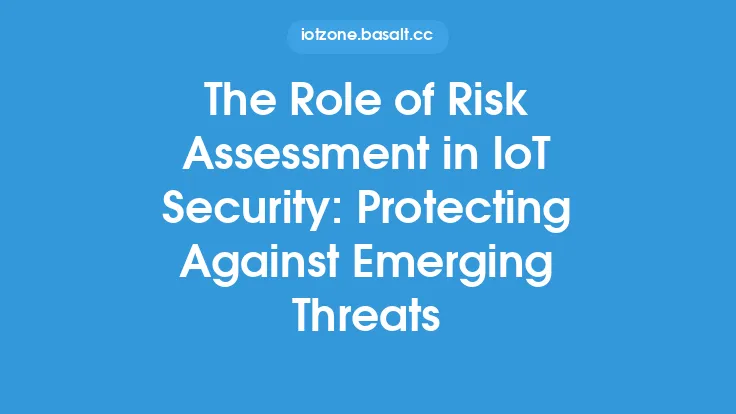The increasing number of IoT devices has created a vast attack surface, making it challenging for organizations to secure their networks and devices. IoT devices are being used in various industries, including healthcare, finance, and manufacturing, which has led to a significant increase in the amount of sensitive data being transmitted and stored. As a result, the risk of cyber attacks and data breaches has also increased. To combat this, threat intelligence has become a crucial component of IoT security strategies. Threat intelligence involves collecting, analyzing, and disseminating information about potential or actual cyber threats to help organizations take proactive measures to prevent or mitigate attacks.
What is Threat Intelligence?
Threat intelligence is the process of gathering, analyzing, and disseminating information about potential or actual cyber threats. This information can include data on threat actors, their tactics, techniques, and procedures (TTPs), as well as indicators of compromise (IOCs) and vulnerabilities. Threat intelligence can be used to inform an organization's security strategy, helping them to prioritize their defenses and take proactive measures to prevent or mitigate attacks. In the context of IoT security, threat intelligence is used to identify and analyze potential threats to IoT devices and networks, such as malware, denial-of-service (DoS) attacks, and man-in-the-middle (MitM) attacks.
The Importance of Threat Intelligence in IoT Security
Threat intelligence is essential in IoT security because it helps organizations to stay ahead of emerging threats and vulnerabilities. IoT devices are often vulnerable to attacks due to their limited computational resources, lack of security features, and outdated software. Threat intelligence helps organizations to identify these vulnerabilities and take proactive measures to patch them or implement additional security controls. Additionally, threat intelligence can help organizations to detect and respond to attacks in real-time, reducing the risk of data breaches and other security incidents.
Types of Threat Intelligence
There are several types of threat intelligence, including strategic, tactical, and operational threat intelligence. Strategic threat intelligence provides high-level information about threat actors and their motivations, helping organizations to inform their overall security strategy. Tactical threat intelligence provides more detailed information about specific threats, such as malware or vulnerabilities, helping organizations to prioritize their defenses. Operational threat intelligence provides real-time information about ongoing attacks, helping organizations to detect and respond to security incidents.
How Threat Intelligence is Collected
Threat intelligence is collected from a variety of sources, including open-source intelligence (OSINT), human intelligence (HUMINT), and technical intelligence (TECHINT). OSINT involves collecting information from publicly available sources, such as social media, forums, and websites. HUMINT involves collecting information from human sources, such as interviews, surveys, and focus groups. TECHINT involves collecting information from technical sources, such as network traffic, system logs, and malware analysis.
Threat Intelligence Feeds
Threat intelligence feeds are a key component of threat intelligence, providing organizations with real-time information about potential threats. Threat intelligence feeds can be sourced from a variety of providers, including commercial vendors, open-source projects, and government agencies. These feeds can provide information on IOCs, TTPs, and vulnerabilities, helping organizations to stay ahead of emerging threats. Threat intelligence feeds can be integrated into an organization's security information and event management (SIEM) system, helping to automate the process of detecting and responding to security incidents.
The Role of Machine Learning in Threat Intelligence
Machine learning is playing an increasingly important role in threat intelligence, helping organizations to analyze and disseminate large amounts of data. Machine learning algorithms can be used to identify patterns in threat data, helping organizations to predict and prevent attacks. Additionally, machine learning can be used to automate the process of analyzing and disseminating threat intelligence, helping organizations to reduce the time and resources required to stay ahead of emerging threats.
Implementing Threat Intelligence in IoT Security
Implementing threat intelligence in IoT security requires a comprehensive approach, involving people, processes, and technology. Organizations should start by establishing a threat intelligence program, which includes defining the scope and goals of the program, as well as identifying the sources of threat intelligence. Next, organizations should implement a threat intelligence platform, which can help to collect, analyze, and disseminate threat intelligence. Finally, organizations should integrate threat intelligence into their overall security strategy, using it to inform their defenses and take proactive measures to prevent or mitigate attacks.
Challenges and Limitations of Threat Intelligence
While threat intelligence is a crucial component of IoT security, there are several challenges and limitations to its implementation. One of the main challenges is the sheer volume of threat data, which can be overwhelming for organizations to analyze and disseminate. Additionally, threat intelligence requires significant resources and expertise, which can be a barrier for small and medium-sized organizations. Finally, threat intelligence is not a silver bullet, and it should be used in conjunction with other security controls, such as firewalls, intrusion detection systems, and encryption.
Best Practices for Threat Intelligence
To get the most out of threat intelligence, organizations should follow several best practices. First, organizations should define a clear scope and goals for their threat intelligence program, helping to ensure that it is aligned with their overall security strategy. Next, organizations should identify multiple sources of threat intelligence, helping to ensure that they have a comprehensive view of the threat landscape. Finally, organizations should integrate threat intelligence into their overall security strategy, using it to inform their defenses and take proactive measures to prevent or mitigate attacks.
Conclusion
Threat intelligence is a crucial component of IoT security, helping organizations to stay ahead of emerging threats and vulnerabilities. By collecting, analyzing, and disseminating information about potential or actual cyber threats, organizations can take proactive measures to prevent or mitigate attacks. While there are several challenges and limitations to the implementation of threat intelligence, following best practices and using machine learning can help organizations to get the most out of their threat intelligence program. As the IoT continues to grow and evolve, threat intelligence will play an increasingly important role in helping organizations to secure their devices and networks.





